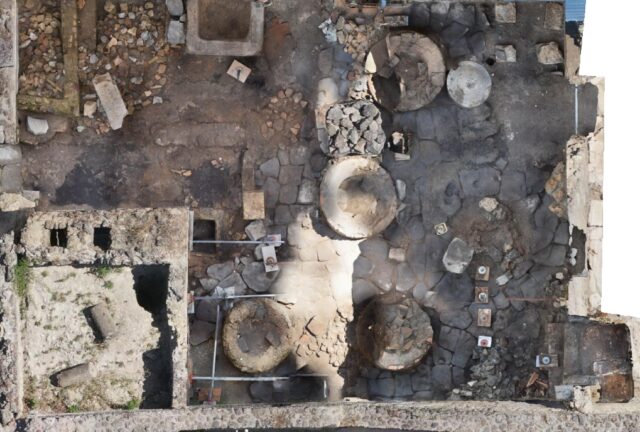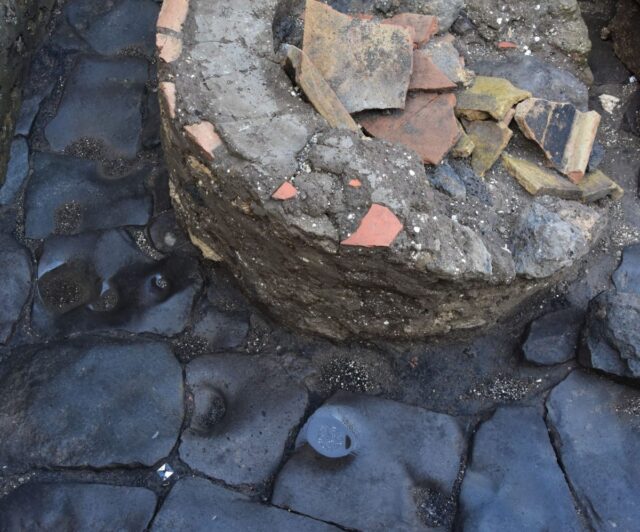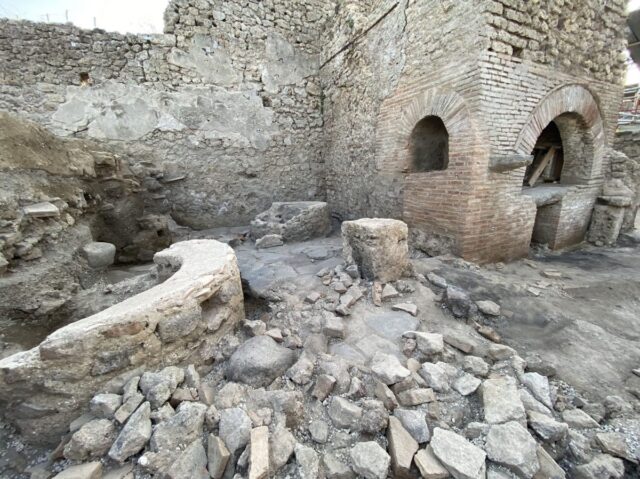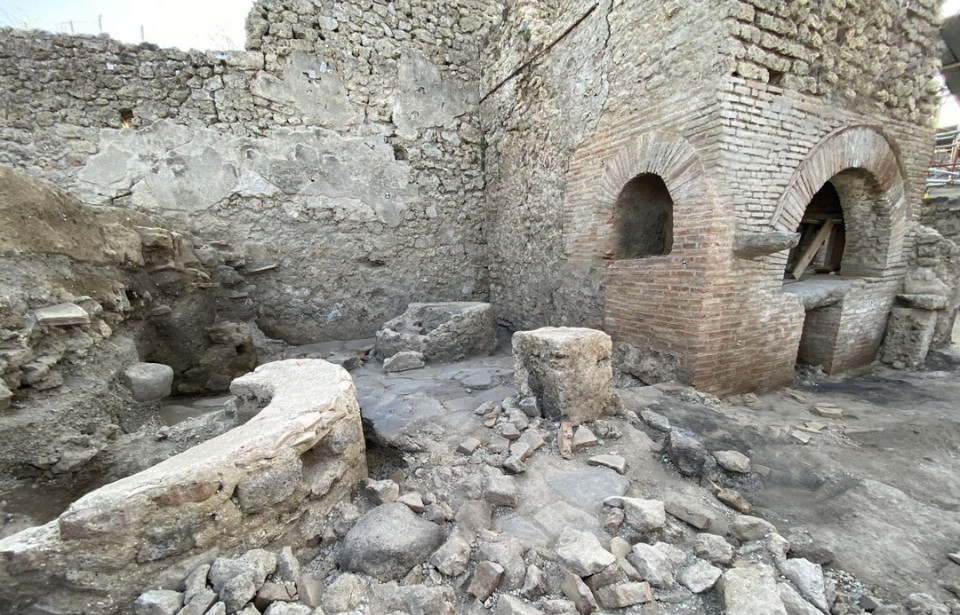Archaeologists at Pompeii Archaeological Park have made yet another discovery at the site, one which has illuminated the darker realities of the enslaved population in the city. They found a bakery-prison where people and animals were imprisoned and exploited to produce bread in confined working conditions. Part of the Region IX, Insula 10 area of the park, the find helps to shed more light on the little history discovered about the enslaved people at Pompeii.
The discovery is divided into two parts

The house discovered at the site was divided into two very distinct parts: the first was a residential home that was relatively well-preserved, showcasing lavish frescoes on the walls that withstood the eruption of Mount Vesuvius and the test of time. The second section was a cramped, small bakery that was cut off from the outside world, where enslaved people were forced to grind grain to make bread. The room was fitted with small windows high up on the wall, secured with iron bars. It also featured only one exit, which led to the house’s atrium, limiting the occupants’ ability to leave.
The state of the residence and bakery at the time of excavation suggests that the property was undergoing renovations when the eruption occurred. Additionally, the remains of three victims in one of the bakery rooms suggest that despite the renovations, the property was still housing individuals at that time.
Markings indicate movement inside the bakery-prison

What archaeologists found inside the bakery was arguably even more jarring than finding the bakery-prison itself. Found on the floor in the milling area, adjacent to the stable, were indentations in the floor in a circular pattern. These markings indicate the coordinated movement of the animals that were forced to walk around for hours blindfolded in order to operate the millstone.
While the indentations initially appear to have been made after hours and hours of walking in the same motions, archaeologists believe they are actually deliberate carvings to prevent the animals from slipping on the pavement.
Comments from the Archaeological Park’s administration

Several discoveries of Pompeii’s enslaved population at the archaeological park have been made in the past, a class that made up the majority of the population and which the city’s economy and culture were propped upon. The discovery of this bakery-prison helps to provide even more information about their oft-forgotten daily lives.
Gabriel Zuchtriegel, the director of Pompeii archaeological park, made a statement about the bakery-prison, saying, “It is, in other words, a space in which we have to imagine the presence of people of servile status whose freedom of movement the owner felt the need to restrict.”
More from us: 4,400-Year-Old Lost Rooms Have Been Discovered In Ancient Egyptian Sahura Pyramid
He continued, “It is the most shocking side of ancient slavery, the one devoid of both trusting relationships and promises of manumission, where we were reduced to brute violence, an impression that is entirely confirmed by the securing of the few windows with iron bars.”
